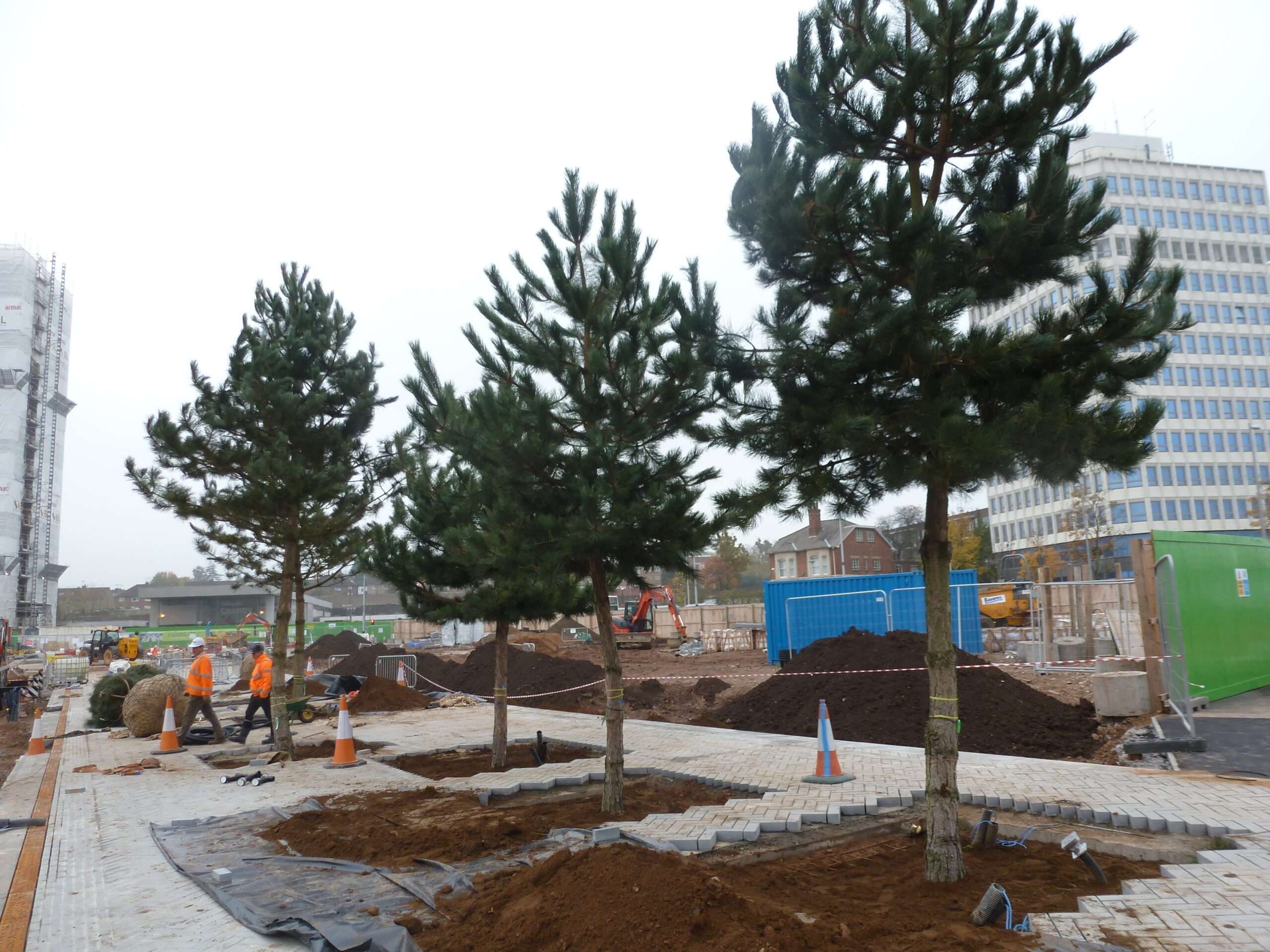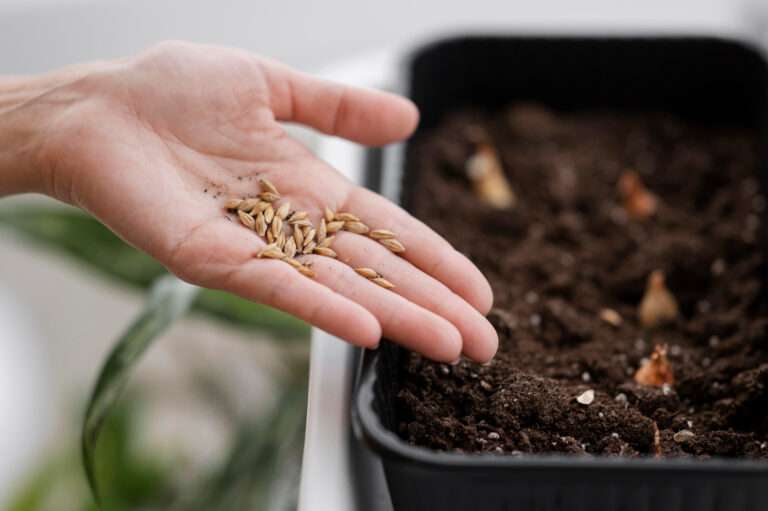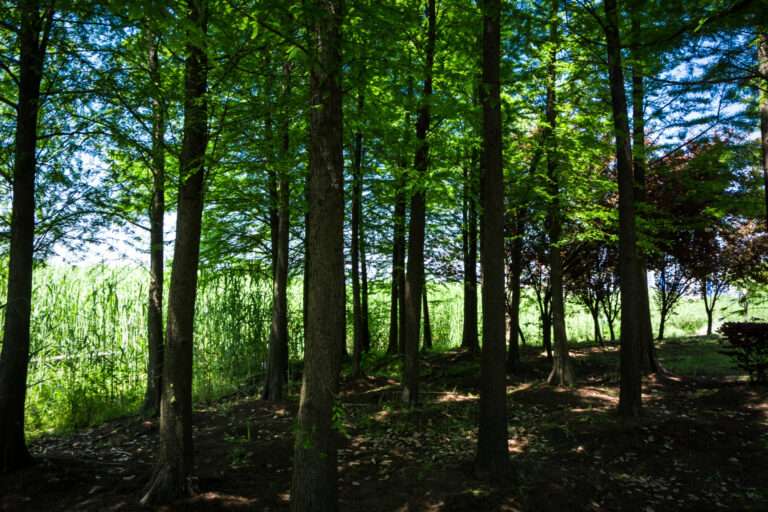Tree Pit Construction Made Easy: 7 Essential Steps for Long-Term Tree Health
Why Tree Pit Construction Matters
Whether you’re working on a commercial streetscape or a community regeneration project, the long-term success of urban tree planting starts underground — quite literally. Tree pit construction may not be the most glamorous aspect of landscape design, but get it wrong, and you’ll soon see poor growth, damaged paving, or even tree failure.
A well-designed and properly constructed tree pit ensures that newly planted trees not only survive but thrive. It protects root systems, supports sustainable drainage, and allows for healthy tree establishment in the often-hostile environments of footpaths, roadsides, and hard landscapes.

In this blog, we’ll walk you through the seven essential steps for successful tree pit construction, explore common pitfalls, and provide expert insights on how to futureproof your planting scheme.
What is a Tree Pit?
A tree pit is a specially prepared underground space designed to give a tree the optimum conditions to establish and grow in urban or constructed environments. It typically includes soil replacement, drainage, irrigation systems, and root protection — all critical when planting in compacted, impermeable or trafficked areas.
Tree pits come in many forms, including:
- Soft landscape pits (surrounded by turf or planting)
- Hard landscape pits (surrounded by paving or tarmac)
- Structural tree pits (designed for heavy-traffic areas with load-bearing requirements)
1. Planning & Site Assessment
Before breaking ground, site analysis is crucial. Assess:
- Soil quality (does it need replacement?)
- Drainage capacity
- Surrounding surface material
- Space constraints (width, depth, nearby utilities)
💡 Tip: Check for underground services with CAT scans and GPR surveys to avoid costly rerouting or damage.
Failing to assess properly could lead to poor drainage, root girdling or costly remedial works.
2. Excavation & Dimensioning
Tree pits must be sized proportionally to the mature tree — not just the root ball. The British Standard recommends a minimum of:
| Tree Size (Girth) | Minimum Pit Size (L x W x D) |
|---|---|
| 12–14cm | 1000 x 1000 x 600mm |
| 16–18cm | 1500 x 1500 x 750mm |
| 20–25cm+ | 2000 x 2000 x 900mm |
🚧 Ensure pits are not square to root ball only — future root growth needs accommodating.
3. Drainage & Sub-Base Preparation
Urban tree failure is often caused by waterlogging or poor aeration. Avoid this by:
- Installing a permeable sub-base (e.g. Type 3 or clean stone)
- Laying perforated land drains if the site has poor infiltration
- Using a geotextile membrane to separate sub-base from soil
This promotes water flow while preventing soil compaction from migrating downwards.
4. Specifying the Right Soil
Topsoil from site excavations is usually unsuitable. Instead, opt for certified tree sand or structured tree soil. Key properties:
| Requirement | Why It Matters |
|---|---|
| Low compaction | Prevents root suffocation |
| Nutrient balance | Supports establishment & growth |
| Water retention | Maintains hydration without saturation |
| Structural strength | Supports paved surfaces where needed |
🌳 Structured soils such as CU-structural soil are ideal for hardscape areas.
5. Installing Root Management Systems
Roots can crack pavements or interfere with utilities if left unchecked. Install:
- Root barriers to direct roots downward or laterally
- Root directors to encourage deep, anchoring growth
- Aeration pipes to maintain oxygen supply
📍 Incorporate protection for newly installed tree pits using grilles or guards in trafficked areas.
6. Tree Planting & Support
Once the pit is prepared:
- Position tree at the correct planting depth
- Backfill in layers with free-draining soil
- Stake using underground anchors or angled wooden stakes
- Water thoroughly and install irrigation tubes for maintenance
🎯 Ensure the root collar is just above ground level — too deep and the tree will struggle.
7. Finishing, Protection & Aftercare
Surface finish depends on location. Options include:
- Porous resin-bound gravel for hardscapes
- Tree grilles for footpath integration
- Mulch or grass matting for soft landscapes
Then comes the most overlooked step: aftercare. Schedule watering, formative pruning, and inspections — especially in the first 2–3 years.
✔ Regular aftercare improves establishment rates by up to 80%.
Common Questions About Tree Pit Construction
How deep should a tree pit be?
Depth depends on tree size, but most are between 600mm and 900mm. Allow for root growth and adequate sub-base layers.
Can I use existing soil?
In almost all urban environments — no. Imported, engineered soils are usually necessary to provide drainage and structure.
Do tree pits need drainage?
Yes. Without it, you risk waterlogging, particularly under impermeable paving. Incorporate land drains or permeable fill layers.
Should I use a tree grille?
If the tree is in a hardscape area (like pavements or plazas), a grille protects roots, supports public safety, and allows water infiltration.
Why Tree Pit Construction Shouldn’t Be an Afterthought
Urban tree planting is a significant investment — both financially and environmentally. But without the right below-ground conditions, even the best-selected trees can fail.
By following these seven steps, you not only maximise tree survival rates but also reduce future maintenance costs, enhance biodiversity, and improve the long-term visual appeal of your landscaping scheme.
At Killingley, we offer complete tree pit construction services, ensuring everything from sub-base to grille is professionally installed for optimal growth and compliance.
Invest Below Ground for Success Above Ground
When planting trees in urban or commercial environments, success isn’t just about choosing the right species or creating an attractive canopy. It’s about laying the right foundations — literally.
Tree pit construction, when done properly, protects your investment, encourages thriving greenery, and ensures long-term sustainability for public and private landscapes alike.
So before you plant your next tree, dig a little deeper — and make every pit count.
Killingley Insights is the editorial voice of NT Killingley Ltd, drawing on decades of experience in landscaping, environmental enhancements, and civil engineering projects across the UK.








